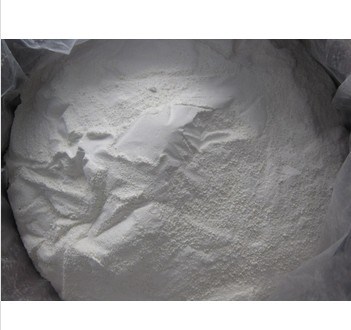Dicamba
IUPAC
3,6-dichloro-o-anisic acid or 3,6-dichloro-2-methoxybenzoic acid
CAS
3,6-dichloro-2-methoxybenzoic acid
CAS No.
1918-00-9
Molecular Formula
C8H6Cl2O3
Category
Herbicides > Aromatic acid herbicides
Activity
Herbicide
Premix
Metsulfuron-methyl+2,4-D+dicamba Tribenuron-methyl+dicamba Nicosulfuron+dicamba+diflufenzopyr Bensulfuron-methyl+dicamba Triasulfuron+dicamba Dicamba+2,4-D fenoxaprop+fluroxypyr+dicamba Dicamba+Nicosulfuron MCPA-sodium+Dicamba Water soluble liquid (potassium, dimethylamine salt, diglycolamine salt, sodium salt, isopropylamine salt); wettable granular (sodium salt). Premix Parters: chloropicrin.
Physical Properties
Molecular weight:221.0. Physical form:Colourless crystals; ( tech. is a buff crystalline solid). Density:1.488 (25 °C); Composition:Tech. grade purity is 85% w/w, remainder being mainly 3,5-dichloro-o-anisic acid. Melting point:114-116 °C; Vapour pressure:1.67 mPa (25 °C, calc.); Henry constant:6.1×10-5 Pa m3 mol-1; Partition coefficient(n-octanol and water):logP = -0.55 ( pH 5.0), -1.88 ( pH 6.8), -1.9 ( pH 8.9) ( OECD 105); pKa:1.97; Solubility:In water 6.1 g/l (25 °C). In ethanol 922, cyclohexanone 916, acetone 810, dichloromethane 260, dioxane 1180, toluene 130, xylene 78 (all in g/l, 25 °C).; Stability:Resistant to oxidation and hydrolysis under normal conditions. Stable in acids and alkalis. Decomposes at c. 200 °C. Soluble in ethanol, acetone, methyl ethyl ketone, and other ketones. Less readily in xylene.
Toxicology
Oral:Acute oral LD50 for rats 1707 mg/kg. Percutaneous:Acute percutaneous LD50 for rabbits >2000 mg/kg. Extremely irritating and corrosive to eyes; moderately irritating to skin (rabbits). Inhalation: LC50 (4 h) for rats >9.6 mg/l. Phytotoxicity:Most legumes are sensitive. ADI:( JMPR) 0.002 mg/kg b.w. [1993]. Banvel* (Rat): Oral LD50 2629 mg/kg. (Rabbit): De
Environmental Profile
Ecotoxicology: Algae: LC50 41 to >250 mg/l, depending on species.Bees:Not toxic to bees; LD50 >100 µg/bee.Birds:Acute oral LD50 for mallard ducks 2000 mg/kg. Dietary LC50 (8 d) for mallard ducks and bobwhite quail >10 000 mg/ kg diet.Daphnia: LC50 (48 h) 110 mg/l.Fish: LC50 (96 h) for rainbow trout and bluegill sunfish 135 mg/l. Environmental fate: Animals:In mammals, following oral administration, dicamba is rapidly eliminated in the urine, partly as a glycine conjugate.Soil:In soil, microbial degradation occurs, the principal metabolite being 3,6-dichlorosalicylic acid. Under conditions amenable to rapid metabolism, DT50 <14 d. Koc 2. Plant:The degradation rate in plants varies greatly with species. In wheat, the major metabolite is 5-hydroxy-2-methoxy-3,6-dichlorobenzoic acid, whilst 3,6-dichlorosalicylic acid is also a metabolite. WATER SOLUBILITY: Soluble
Nanjing Zhong Li New Mstar Technology Ltd was founded in 2014, is an emerging business, company agents, R & D, production, trade and integration, mainly engaged in resin material, medicine, pesticide intermediates, pesticides, insecticides, fungicides, herbicides and so.
